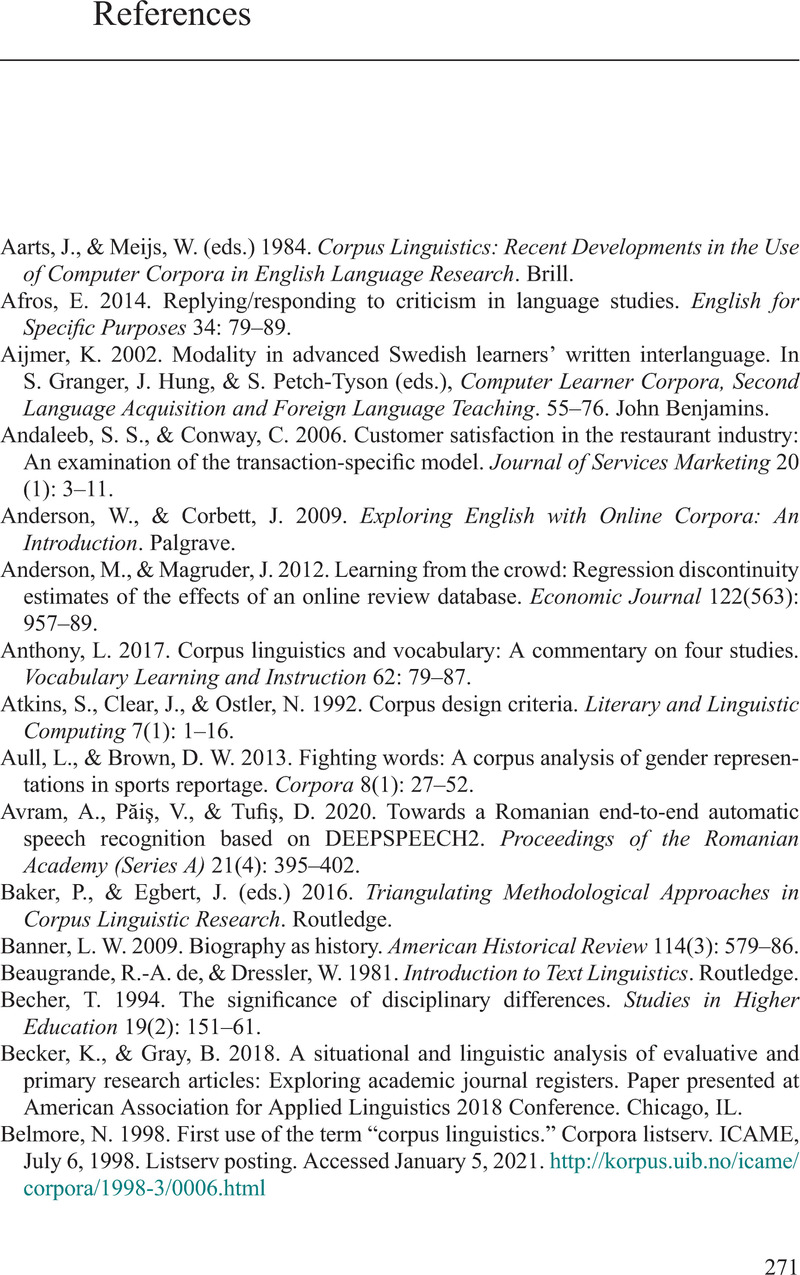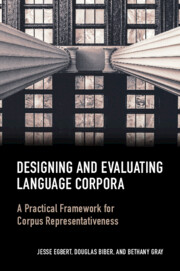Book contents
- Designing and Evaluating Language Corpora
- Designing and Evaluating Language Corpora
- Copyright page
- Contents
- Figures
- Tables
- Acknowledgments
- 1 Introduction
- 2 Approaches to Representativeness in Previous Corpus Linguistic Research
- 3 Corpus Representativeness
- 4 Domain Considerations
- 5 Distribution Considerations
- 6 The Influence of Domain and Distribution Considerations on Corpus Representativeness
- 7 Corpus Design and Representativeness in Practice – With Daniel Keller
- Glossary
- Book part
- References
- Index
- References
References
Published online by Cambridge University Press: 07 April 2022
- Designing and Evaluating Language Corpora
- Designing and Evaluating Language Corpora
- Copyright page
- Contents
- Figures
- Tables
- Acknowledgments
- 1 Introduction
- 2 Approaches to Representativeness in Previous Corpus Linguistic Research
- 3 Corpus Representativeness
- 4 Domain Considerations
- 5 Distribution Considerations
- 6 The Influence of Domain and Distribution Considerations on Corpus Representativeness
- 7 Corpus Design and Representativeness in Practice – With Daniel Keller
- Glossary
- Book part
- References
- Index
- References
Summary

Information
- Type
- Chapter
- Information
- Designing and Evaluating Language CorporaA Practical Framework for Corpus Representativeness, pp. 271 - 279Publisher: Cambridge University PressPrint publication year: 2022
